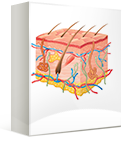To view/print documents on this website you will need Adobe Acrobat Reader™.
We have a wide range of training solutions below to suit your needs. Should you wish to brand one of our current solutions as your own, or even have us come up with a solution built just for you, please visit our
Bespoke Solutions.
Please select a category
Diversity and Inclusion
Unconscious Bias at Work
Unconscious bias affects everyone. This course explains the concept of unconscious bias, examines how biases in the workplace can affect individuals and organizations, and identifies ways to mitigate these negative effects.
Upon completion of this course, you will:
-
Understand the concept of unconscious bias
-
Recognize how biases in the workplace can undermine logical decision-making and create an unfair playing field where some individuals have unfair advantages over others
-
Identify ways that individuals and organizations can mitigate the effects of unconscious biases
Diversity and Inclusion Training for Volunteers
Volunteers are the public face of community events, non-profit organizations, and the corporate sponsors that support those events and organizations. Volunteer workforces should be diverse and inclusive, and every volunteer should feel safe, respected, and appreciated at all times. This course educates volunteer workers about acceptable and unacceptable attitudes and behaviours, how to respond appropriately, and their role in supporting a respectful, productive volunteer environment.
Back to top
Food Safety
BASICS.fst 4th Edition
This course will help you learn important information about food safety and how to do your job better. It has been designed to meet all of the recommended requirements of the Canadian Food Retail and Foodservices Code and Regulations. The course fee includes the invigilated exam that you must write after completing the online preparation course.
Gluten-Free Training for the Food Service and Hospitality Industry
Training designed for food handlers to understand the essential elements of a food service gluten-free program, what is involved in offering gluten-free food, why avoiding contamination matters, and how to plan and manage your system once it is in place.
Certified Professional - Food Safety (CP-FS) Online Review (Preperatory)
The Certified Professional - Food Safety (CP-FS) credential is designed for individuals within the public and private sectors whose primary responsibility is the protection and safety of food. This online review course will help course participants prepare for the certification exam. The exam for this prestigious credential integrates food microbiology, hazard analysis and critical control points (HACCP) principles, and regulatory requirements into questions that test problem-solving skills and specialized knowledge.
Back to top
Healthcare
Skin Care and Pressure Ulcer Prevention
Skin Care educates participants about common skin conditions, describes appropriate care of wounds and pressure sores, and provides general skin care guidelines.
This program was developed by
Spinal Cord Injury Alberta and the
Wound, Ostomy and Continence Institute
Feeding Eating Swallowing
Feeding, Eating, and Swallowing provides general information about safe food handling,
identifies common diseases and conditions that affect a person’s ability to eat, swallow and/or
digest food, and discusses ways to assist in food intake, including adaptations to food textures,
and the use of feeding tube systems.
Medical Terminology
The Medical Terminology course provides an introduction to the professional language used by those who are directly and indirectly involved with the art of healing. The course will also introduce those not currently involved in the health care environment with an introduction to the language of medicine. In addition, the program will provide participants with the basics of human anatomy and physiology.
Mental Health
Mental Health educates participants about mental health, including information about grief and depression and practical strategies to support those who may be experiencing mental health issues.
Infection Control and Prevention Basics for Healthcare Workplaces
Microorganisms/germs are always present in the environment and can be transferred from one person to another quite easily. Infection Control and Prevention Basics for Healthcare Workplaces shows how infections spread, and the routine practices you can use to prevent the transmission of microorganisms/germs that cause infections in any healthcare setting.
Bloodborne Pathogens
This program is designed for individuals who may be exposed to blood and body fluids or items contaminated with blood during the performance of their work and who wish to gain a basic understanding of bloodborne pathogens.
Basic Anatomy
Basic Anatomy describes the systems and vital organs that make up the human body, the components and functions of each, and how the parts of the body interact.
Upon completion of the course, students will be able to: Know the components of each body system Identify the functions performed by each system Recognize how each system interacts with the other body systems.
Back to top
Sport
Cultural Awareness in Youth Sport
Sport offers many opportunities to meet people and learn about various cultures. This course on Cultural Awareness in Youth Sport examines the basic concept of culture and provides sport leaders with practical ways to model cultural awareness to youth players.
Effective Board Governance
This course was designed to educate volunteers who serve on a board of a non-profit organization. Typically, organizations have staff (paid or volunteer) who report to an administrator who reports to the board of directors. This course uses examples and scenarios from that type of organizational structure. For those who serve on a board for organizations structured differently, not all examples and scenarios in the course will be directly applicable, however the key lessons of the modules and concepts are transferable. It is recommended that all board members under go an orientation for their roles and responsibilities. This training contains video scenarios and interactive exercises to enforce key concepts.
Risk Management in Sport
Risk Management in Sport defines risk management, explains why effective risk management is necessary, and provides a practical description of the risk management process as it applies to sport organizations.
The Respectful Athlete
Young athletes publicly represent their sports, sport organizations, schools, and communities. It is very important for them to treat other players, coaches, officials, and spectators with respect and behave appropriately at all times. This course educates participants about acceptable and unacceptable attitudes and behaviours, including information about discrimination, harassment, and bullying, appropriate response, and ways to support an inclusive, respectful environment in which every player feels safe and can contribute fully and productively to the team.
Back to top
Workplace Safety
COVID-19: General Workplace Safety
COVID-19: General Workplace Safety helps participants understand COVID-19, how it spreads, and general safe work practices to protect their health and the health of others.
You will learn about:
-
The symptoms of COVID-19 and how it spreads
-
Safe work practices, including:
-
Proper hand-washing technique using soap and water
-
Proper hand-washing technique using hand sanitizer
-
Respiratory Hygiene
-
Social distancing
-
Cleaning and disinfection
-
Use of gloves
-
Use of non-medical face masks
-
What to do if you become ill or are exposed to illness
To obtain a certificate of training participants need to complete an online multiple choice test to verify their knowledge.
Please note - This course is designed for people working in offices, factories and other non-acute settings.
Introduction to Workplace Health and Safety
This course provides workers with health and safety awareness training. Content includes information about the duties of employers and supervisors, their rights and duties as workers, common workplace hazards, and ways to protect themselves, and others, from harm.
Back to top









.png)








